
- Film 120 roll, picture size 6x6cm
- Lens: Meniscus lens 72.5mm f/8.8 filter slip-on
- Aperture: f/8.8 and f/11; setting: lever and cloudy and sunny setting icons on the lens-shutter barrel
- Internal yellow filter: set to yellow dot
- Focusing: fixed focus
- Shutter: single speed rotary shutter, speed of 1/30
- Synchronised for Agfa Clibo flash unit, attach buttons on the right of the top plate
- Cocking lever and shutter release: by the same lever, on the lens-shutter barrel
- Winding knob: on the top plate
- Viewfinder: simple Galilei
- Back cover: removable, w/ red window, opens by a latch on the left of the camera
- Tripod socket: ¼”
- Strap Lugs
- Body: plastic; weight: 183g
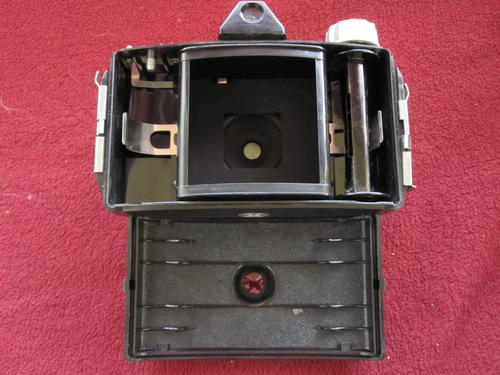

The 120 film format is a roll film which is nominally 60 mm wide (in fact, about 61 mm, or 2.4 inches). The film is held in an open spool originally made of wood with metal flanges, later with all-metal, and finally with all-plastic. The length of the film is typically 30 inches (760 mm) up to 32–33 inches (810–840 mm), attached to a piece of backing paper longer and slightly wider than the film. The backing paper protects the film while it is wound on the spool, with enough extra length to allow loading and unloading the roll in daylight without exposing any of the films. Frame number markings for three standard image formats (6×4.5, 6×6, and 6×9; see below) are printed on the backing paper.
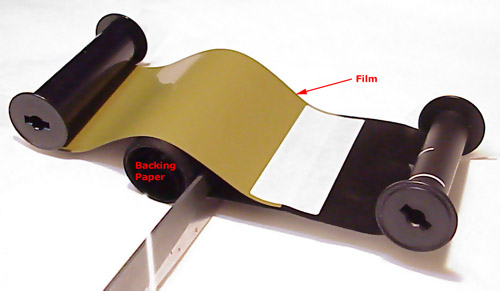
The 220 film format was introduced in 1965 and is the same width as 120 films, but with about double the length of the film and thus twice the number of possible exposures per roll. Unlike 120 films, however, there is no backing paper behind the film itself, just a leader and a trailer. This results in a longer film on the same spool, but there are no printed frame numbers. Moreover, it cannot be used in unmodified old cameras that have a red window as frame indicator. Also, since the film alone is thinner than a film with a backing paper, a special pressure plate may be required to achieve optimal focus if the film is registered against its backside. Some cameras capable of using both 120 and 220 films will have a two position adjustment of the pressure plate (e.g. the Pentax 6x7, Mamiya C220, Mamiya C330) while others will require different film backs e.g. the Pentax 645 or Kowa Six)
The specifications for 120 and 220 film are defined in the ISO 732 standard. Earlier editions of ISO 732 also provided international standards for the 127 and 620 file formats.


The Kiev 6C (or “КИЕВ” – I love Cyrillic text!) is a camera made by Kiev Arsenal in the former Soviet Union, present-day Ukraine. It is a copy of the DDR’s Pentacon Six featuring the same P6 lens mount. The lens on my model is a Vega-125 90mm f/2.8!
It is slightly unusual looking, with a shape unlike most of its box-y MF cousins, and if you squint a little you could convince yourself it is part of the Zenit SLR range (albeit one which has been hitting the gym and tossing back protein shakes). The shutter release button is rather bizarrely positioned on the left-hand side of camera’s front, which can be slightly cumbersome but you eventually find you’re able to twist your hands into an arrangement where you can hold, focus and shoot with ease.
There are waist level finders as well as metered and un-metered prisms available, however, I have the metered prism which uses a now obsolete 4.5V battery – but I use 3 little button batteries (like you’d find in your LC-A) wedged into place by aluminum foil. The metered prism uses the GOST standard (ГОСТ, roughly the same as ISO) for film sensitivity, and ranges from 8 to 1000.
There are plenty of shutter speeds available (1/1000s, 1/500s, 1/250s, 1/125s, 1/60s, 1/30s, 1/15s, 1/8s, 1/4s, 1/2s, and Bulb) so together with the metered prism there is no excuse for not getting the perfect exposure – though I often manage to do just that!
If you get the chance I highly recommend you check out one of the Kiev range, there’s also an excellent review of the 6C’s big brother – the Kiev 88 – elsewhere on this site you’d do well to take a peek at.

Why aren’t you developing your own film?
Manufactured by Ihagee Kamerawerk Steenbergen & Co, Dresden, East Germany
Model: c.1969, (produced between 1969-70),
All Dresden Exactas produced between 1936-70
35 mm film SLR camera
Engraving on the top plate: aus DRESDEN
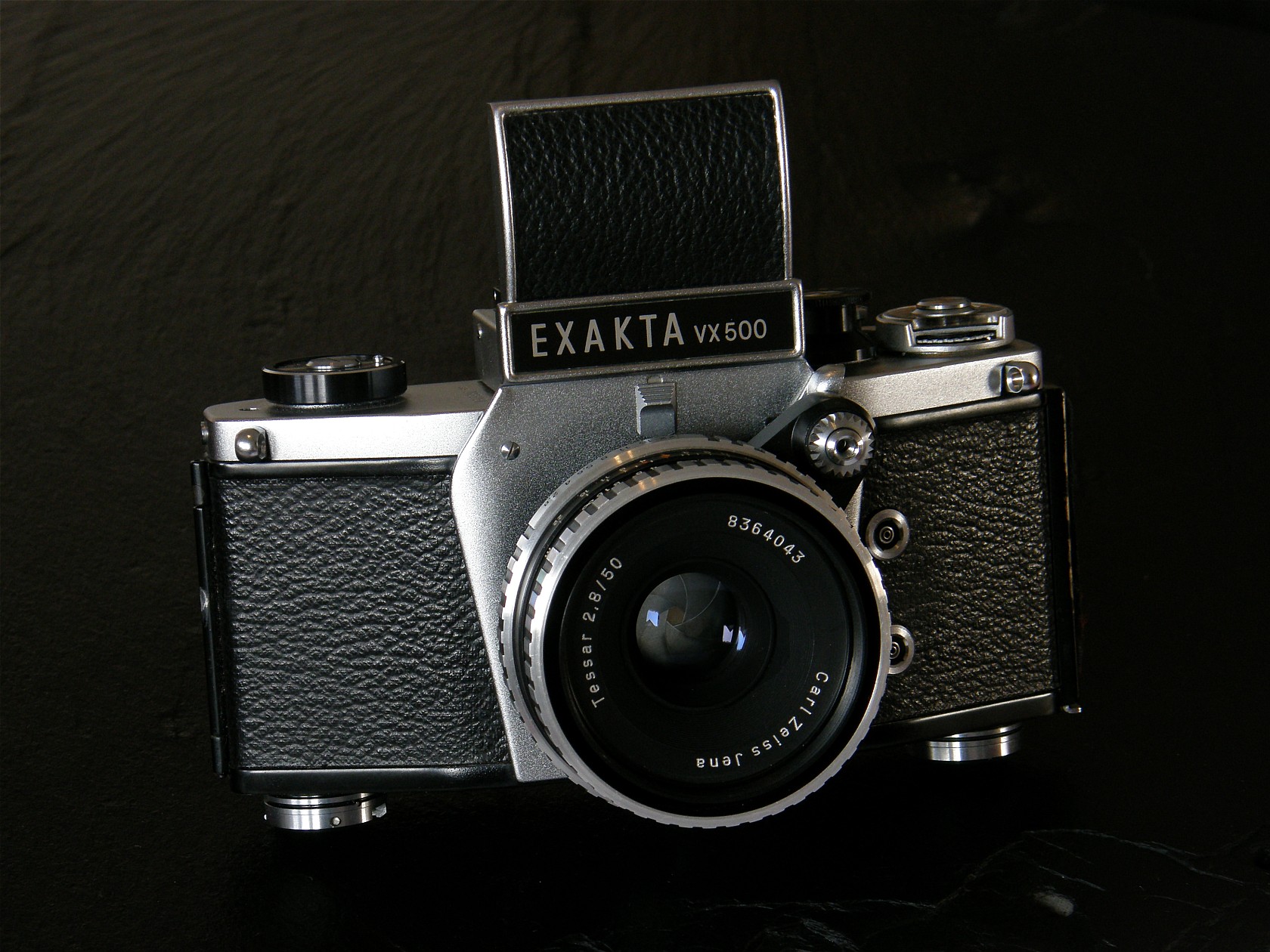
Aperture: f/2 - f/16, settings and dial:
Shutter: horizontal focal plane double cloth type, Speeds: 1/30-1/500, +B, no long speeds, setting dial: push-out and turn knob, on the top plate, left side
Shutter release: a knob, on front of the body, left side of the lens,
w/ a safety locking cap, and cable release socket, it can be pressed with the plunger on this special lens, w/cable release socket also
View finder: eye level SLR penta prism finder P.3, interchangeable with waist level finder,
Finder release: via a knob beneath the Exacta logo
w/ a triangular red indicator appears in the top-right of the viewfinder when the shutter required winding
Mirror: instant return
Cocking lever: also winds the film, short-stroke, right to left film transport, left upper side of the top plate
Frame counter: coupled with winding lever, decreasing type, resets manualy
Re-wind: via a Folding crank handle on the bottom plate,
Re-wind release: a push knob, on the top plate, just in front of the cocking lever
Flash PC socket: two, on front of the camera, F and X, sync.1/40,
Setting: a flash symbol on the speeds dial
Memory dial : for ASA: on the top plate right side,
For film type: on the camera support knob, bottom plate, left side
Take up spool: Special type, movable
Back cover: Hinged, non-detachable, opens via a latch on the left side of the camera
Tripod socket: 1/4''
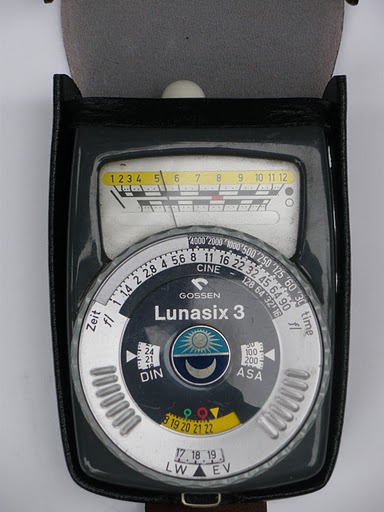 |
Gossen is a quality brand in the field of light meters. A light meter is a device that measures and displays the amount of light in a particular space or area. Light meters are usually used in photography, cinematography and scenic design. Using a light meter helps a photographer choose a shutter speed, determine the proper exposure and overall the optimal level of light when taking pictures. The calibration of a light meter establishes a connection between the particular camera settings and scene or subject.
The advanced photometers then could be used either to measure the light from the potential picture as a whole, to measure from elements of the picture to ascertain that the most important parts of the picture are optimally exposed, or to measure the incident light to the scene with an integrating adapter.
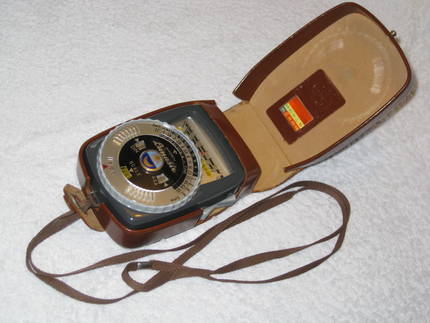 |

